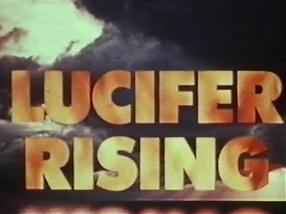The present conventional meaning of sublimity has been determined by two discourses. On the one hand, the colloquial language, and on the other, by Derrida’s and Lyotard’s grasps, both developed on the basis of specific interpretations of Kant’s argumentation. The two discourses have nothing in common, except for the fact that their usage causes the reflection on sublimity to freeze in stereotypical formulae that explain nothing.
The first of those – the formula of colloquiality – often identifies sublimity with pathos, construing it as an old-fashioned tendency towards exaltation, manifesting itself in a bombastic poetics of loftiness and grandiloquence.
The second formula, the Derridian-Lyotardian discourse, focuses on the question of representation. In this context, the key points of reference are those parts of The Critique of Judgment where Kant considers the possibility of the sensual representation of “extrasensory” ideas. According to Kant, “the mind’s efforts to make sensory notions adequate to ideas” are pointless – infinity and the absolute cannot be “distinctly represented”.
Derrida thinks along similar lines, holding that infinity is “inaccessible and inexpressible”, while sublimity is the experience of “inadequacy between the presenting and the presented in a presentation.” The inexpressibility of the infinite is also a key theme in the thought of Lyotard, who maintains that avant-gardism has “its source in the Kantian aesthetics of the sublime” – it is thanks to it that “even before romantic art had been separated from the classic and baroque means of representation, the door opened towards abstractionism and minimal art.“ The avant-garde also headed in that direction, trying to “present that there exists the unrepresentable”, and thus to attain art’s true goal, which is to “show that which makes things visible, rather than the visible itself.”
This is how the sublime is trivialised and immobilised at the same time. Common-sensical colloquiality reduces it to old-fashioned exaltation, while postmodernism confines it to the abstract ghetto of the analytics of representation. The latter formula considerably expands the barren area where there are no resources anymore able to satisfy the burning needs of late modernity. Where modernity focuses solely on the mechanisms of seeing, it misses that which under no circumstances should be missed, namely the longing for Ecstasy to catapult us beyond the late-modern Constriction.
In this situation, petrified by colloquiality and the postmodern – a third element emerges that starts to play a significantly important role. It is the element of commercial cinema. It turns the sense of sublimity into a “projection”, both psychological and cinematographic.
The movie industry – mass-producer of images of sublimity – creates symbols of desire revolving around the phantasm of the disorder of the collective sense of Security, which in the liberal-democratic framework is defined by the postulate of the profitable taming of the Other – the uncontrollable and unprofitable.
In this context, the question arises whether the Hollywood-generated streams of energy penetrating the cosmic depths symbolise (self-)critical impulses of late modernity? Is an earthquake viewed on home cinema an analogy of the dialectic moment of the culture of Security – the moment where that culture, playing an aesthetical game with the image of disaster and adventure, revises its boundaries and tries to open itself to that which it perceives as dangerously Other, but also exciting and desired?
These questions are accompanied by one more. Can the cinematograph be an instrument of genuine revision and opening towards the Other, or is it but a pointless ersatz of change and a projector of false antitheses?
(Description courtesy lokal_30)
Year: 2008
Duration: 11'30''
Language: no language
Source: BETA SP
© Tomasz Kozak. Courtesy lokal_30
Acquisition: deposit
Ownership form: deposit









